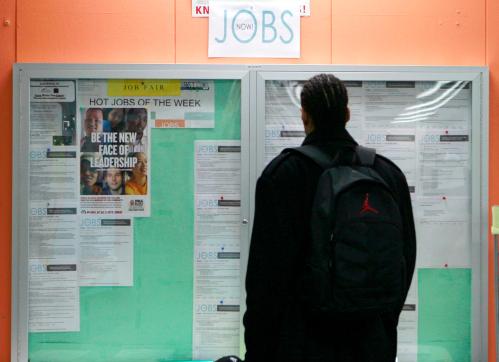This article originally appeared in Real Clear Markets on December 12, 2018.
Just three years ago in 2015, the Social Security Disability Insurance (DI) program was in a financial nose-dive. Current revenues covered only about 80 percent of outlays. Scheduled benefits could be paid only by drawing down reserves that the Social Security Administration (SSA) had accumulated earlier when revenues exceeded outlays. But calamity loomed. Reserves were projected to be depleted late in 2016, at which point 11 million DI beneficiaries faced benefit cuts of nearly 20 percent. As a stop-gap measure Congress in late 2015 temporarily increased the share of the Social Security payroll tax revenue going to the DI trust fund. That move delayed insolvency, but only until 2022 according to official projections made at the time.
Threatened benefit reduction was not the only problem. The number of DI applications had more than doubled between 1999 and 2010 for a number of reasons. Two recessions boosted unemployment, and elevated unemployment leads to an increase in DI applications. The recessions also eroded revenues. A growing number of women had accumulated enough earnings credits to be eligible for benefits. Past legislation raised the ‘full retirement age’ when DI benefits convert automatically to retirement benefits. And a growing share of the population was aging into their 50s and early 60s when the prevalence of disabling impairments grows. Some critics alleged that part of the reason for growing rolls was simple fraud. Quite apart from rising costs, many applicants had to wait years for final determinations on whether they met SSA’s definition of disability.
Some criticized DI because it didn’t do enough or serve all who need help. DI benefits are available only to those with established disabling conditions expected to last at least a year or result in death, but do nothing to forestall the progress of impairments before they lead to disability or to help those whose diminished earnings capacity was temporary or had whose impairments that fall short of total disability.
From one standpoint or another, many outside observers and members of Congress saw DI as ripe for reform. To others, DI was a key element of the social safety net that should be expanded and whose major problem was simply a need for more money. To some, it was both.
Three years later, the threat of trust fund depletion has receded. Official projections made in mid-2018 showed adequate funding for DI until 2032, nearly a decade beyond the previous projections. The principle reason for the improved outlook was a huge drop in applications, some an anticipated consequence of economic recovery, and some a startling surprise. Projections would have been rosier still had the Social Security actuaries been willing to assume that the application drop would endure for more than a few years, a step they decided not to take until they better understood why the flow of DI applications had slackened.
Despite the abrupt end of the 2015 funding crisis, most of the other problems with DI that existed three years ago, persist undiminished.
With respect to administration, most DI applications are handled relatively quickly, but the quarter of applicants who appeal denial of benefits must wait even longer today for a hearing before an Administrative Law Judge (ALJ) than they did three years ago and three times longer than they had to wait in 1990. SSA administrative budgets have remained stagnant even as the Great Recession and retiring baby-boomers have inflated workloads. The agency has faced problems in hiring a sufficient number of ALJs and support staff. In the wake of the recession-related bulge in applications, an avalanche of cases descended sitting ALJs with inadequate staff support, operating under clumsy and time-consuming administrative procedures.
Those applicants who appeal earlier denials encounter a cruel Catch-22. During the wait for a hearing, currently averaging about 600 days and much longer in many cases, claimants capable of working are discouraged from doing so because their applications will be automatically denied if they earn more than $1,180 a month, a sum defined, without conscious irony, as “substantial gainful activity.” As experience of the 1990s shows, shorter waiting times for hearings are possible. But materially lowering waiting times would require controversial changes in administrative procedure as well as large and costly increases in staff and budget.
Despite the abrupt end of the 2015 funding crisis, most of the other problems with DI that existed three years ago, persist undiminished.
Still, some important administrative improvements have been made. SSA has instituted additional training for ALJs and new measures of their performance in an effort to narrow the huge variation in the proportion of appeals approved by various judges. As recently as ten years ago, dozens of judges approved 90 percent of all cases they heard, although only about half were approved on average. Some ALJs heard 1,000 or more cases a year, although SSA believes that 500-700 cases is a full workload, almost certainly signaling slap-dash treatment of some appeals. SSA has worked hard and has succeeded in lowering the variation in the numbers of decisions and variation in approval rates.
Other ideas for major reform of the DI program abound. The current DI program provides cash assistance to people with established long-term disabilities, but does little to forestall the advent of disability, nothing to assist those with short term disabilities, and little to help current beneficiaries to recover. To deal with these problems, two analysts proposed pilots to generate information on how best to fill these gaps. Under one employers would be relieved of given relief from part of the DI payroll tax if they reduce disability incidence of their employees by 20 percent or more. Under a second, DI applicants found to have good recovery chances would be offered vocational and health services, a wage subsidy, and time-limited cash assistance provided that they suspend their applications. Other analysts have suggested that employers be required to provide all employees with disability insurance covering the first two years of any subsequent disability. Because premiums for such insurance would vary with the proportion of employees who become disabled, employers would have an incentive to help workers remain economically active.
The abatement—and possible disappearance—of the 2015 DI financial crisis is undoubtedly good news. It modestly lowers projected budget deficits and signals that better options than applying for DI are available for many more workers. But it pushes to the back-burner needed reforms in a program that is both a vital part of the nation’s safety-net and very much in need of improvements.





Commentary
Op-edDisability insurance: A crisis ends, but problems persist
December 12, 2018